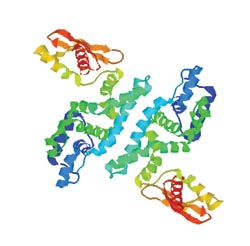NIH grant explores novel roles for RNA in gene expression
 Image courtesy Allen Nicholson
Double-stranded RNA, which plays a key role in host cell defense against viral infection, is being investigated by Biology and Chemistry Professor Allen Nicholson for its role in gene expression and regulation.
|
Allen Nicholson, professor in the departments of Biology and Chemistry, has received a four-year, $1.1 million continuation grant from the NIH Institute of General Medical Sciences to continue his research into the role of RNA in gene expression and regulation.
|
|
“We want to understand this very specific recognition process; why it is targeting certain double-stranded RNAs,” he said. “If the enzyme were to recognize and cut a different RNA within the cell, it could cause the cell to die.”
|
|